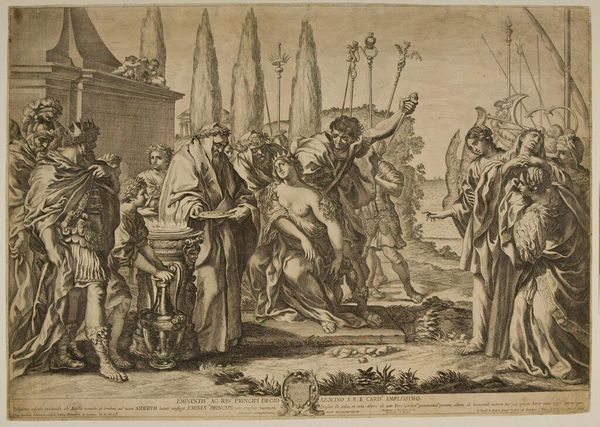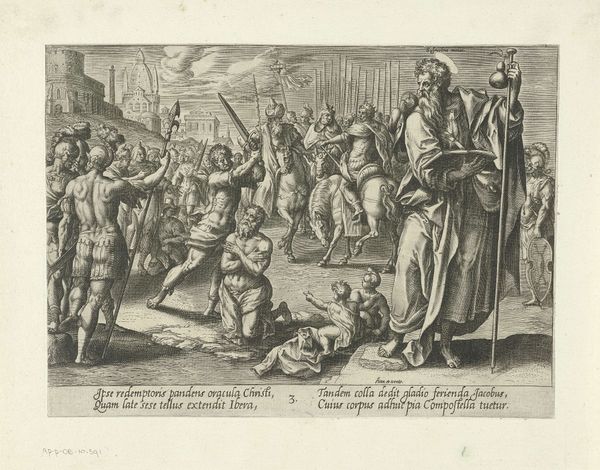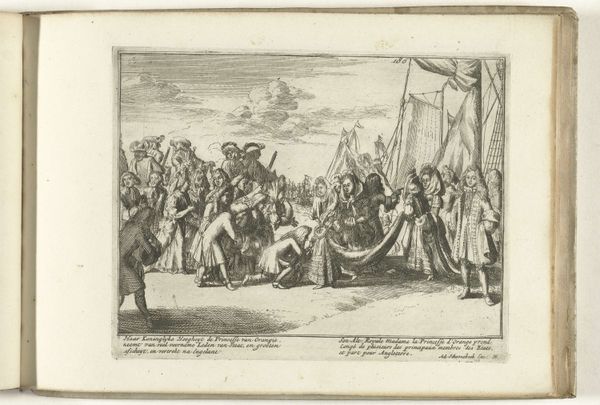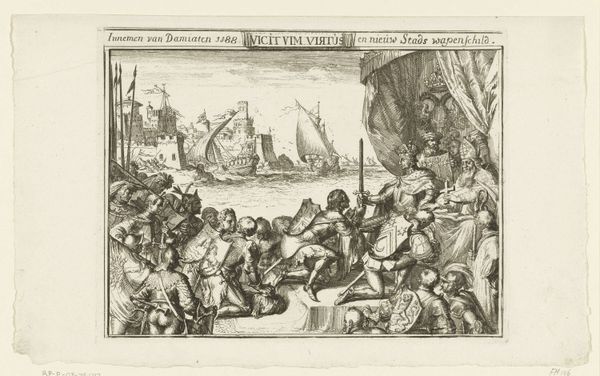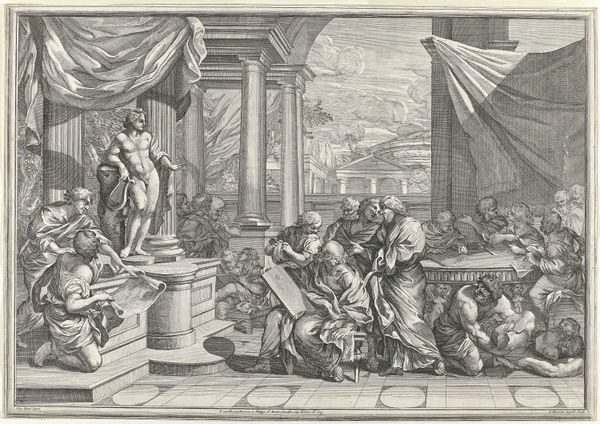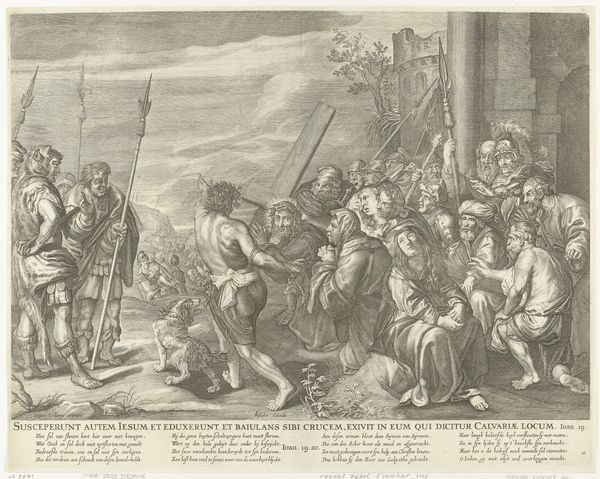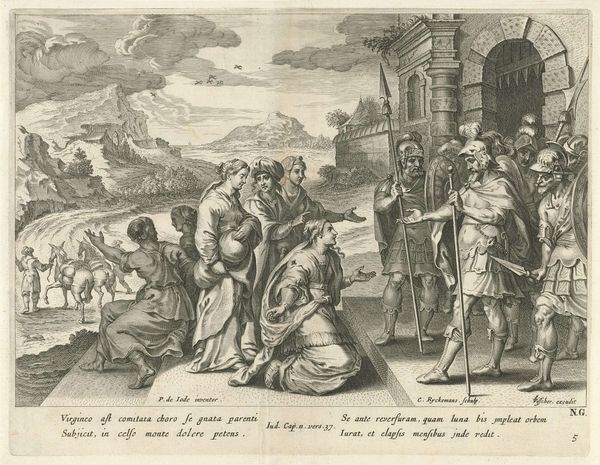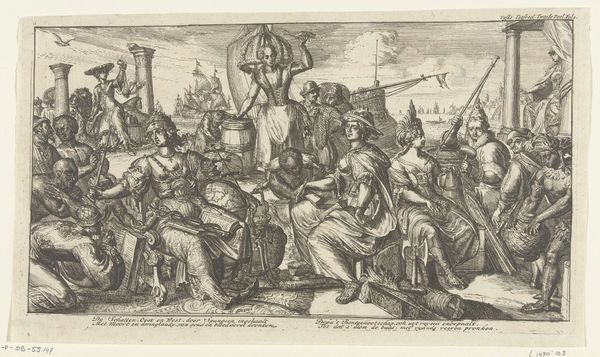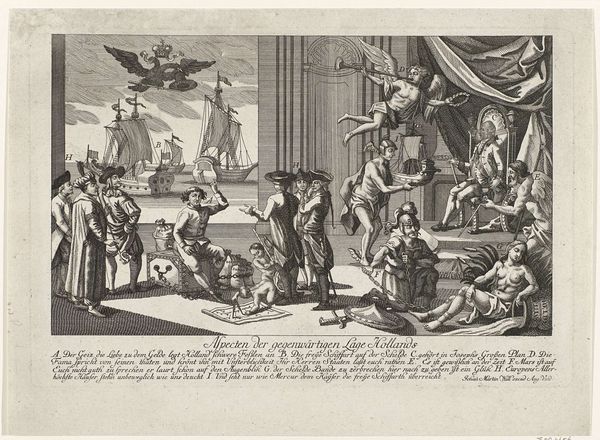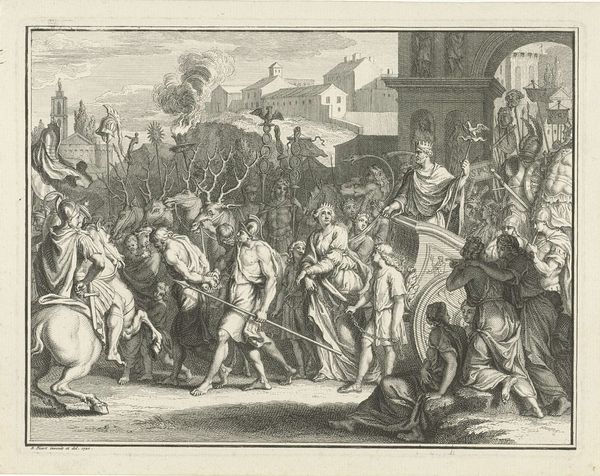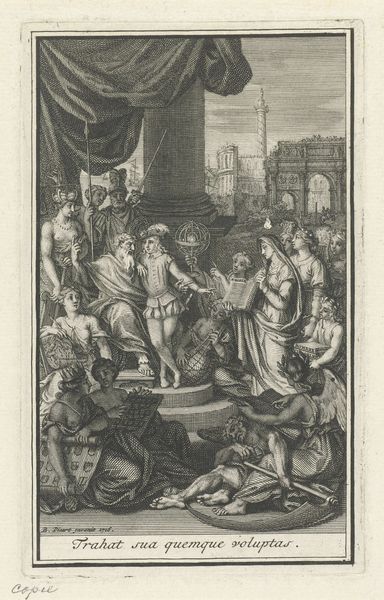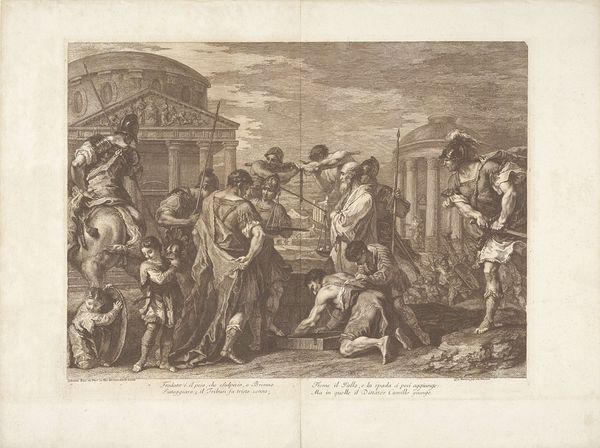
print, intaglio, engraving
#
ink drawing
#
allegory
#
baroque
# print
#
intaglio
#
classical-realism
#
figuration
#
history-painting
#
engraving
Dimensions: height 440 mm, width 627 mm
Copyright: Rijks Museum: Open Domain
Editor: This print, "Polyxena at the Tomb of Achilles," by Pietro Aquila, dating back to the late 17th century, it is quite unsettling with an epic sense of dread permeating every corner. The expressions seem caught between solemn duty and raw grief. What resonates with you most about this work? Curator: Ah, yes, this piece. It transports me! What strikes me is not just the drama – the poised Polyxena, the looming sacrifice – but the palpable weight of history pressing down. Aquila masterfully uses line and shadow, you see, to give form not just to bodies, but to an entire atmosphere of doomed grandeur. Do you sense the echo of classical tragedy? That unflinching look at fate and consequence? Editor: Absolutely, that's such a good way to put it -- "doomed grandeur." It's like, the figures are acting out this ritual but they're almost crushed by it. But how much of that feeling do you think comes from Aquila’s own perspective and the time in which he made the work, and how much from his intention in the context of this moment from Greek tragedy? Curator: An astute observation. The Baroque loved a good theatrical flourish, and Aquila, bless his heart, lays it on thick. However, he isn't just staging a scene, darling. There is such intense understanding, etched with such clear emotion, which is fascinating, even now, after the passing of so many years. The tragedy almost touches us today. Don't you think? Editor: I see what you mean. It is still striking despite its historical distance. It makes you think about who gets to tell whose story, right? I initially approached it from the art perspective, now I'm appreciating the deeper history behind the image and how Aquila expressed the tale.
Comments
No comments
Be the first to comment and join the conversation on the ultimate creative platform.
